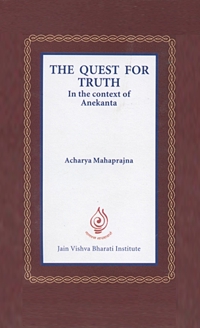
Dharma being beyond emotions cannot be manifested. It relates to the soul. But since it is a person's attribute, it is also manifested. Morality is an attribute of man and so it is manifested but it is towards others and so it is social. It is social but not different from the social code of conduct. Social conduct is framed with respect to space, time, changing of different societies and their requirements. Morality does not change with space and time; it is the same everywhere and is influenced by dharma.
Both dharma and morality can be categorized as eternal truths whereas societal conduct cannot be kept in the same category. The first two are intrinsic in man. Societal conduct, however, is imposed on society. In its pure sense, it is societal. In its origin morality is personal and in its expression it is societal. In its true sense dharma is related to the soul and in its expression is personal.
In the trinity of purpose there is mention of dharma with wealth and desire. This is essentially social ethics. The dharma that is often mentioned along with wealth (artha) and attachment (kama) is with reference to societal conduct. That is why Mahavira had talked of all these three things in terms of the world. Even in the texts like the smritis, dharma has most often been referred to in this manner. All Indians have understood this form of dharma as the eternal truth. It is on this basis that many unnecessary practices have evolved in society in the form of:
- Orthodoxy:
Dharma has given rise to orthodoxy. It is in the name of dharma that people did not have the courage to break traditions and customs
- Exploitation:
In the name of dharma, women have been continually exploited. The theory of karma has prevented a rebellion from the ever-exploited poor
- Lethargy and fatalism:
Dharma has fostered fatalism. The result is that people are lazy and inactive
- Violence and war:
Many pages of human history are filled with stories of war in the name of redemption of man or Jehad.
- Disgust:
Cast distinction and untouchability also result from this understanding of dharma. In sociological literature the difference between dharma and morality has been explained as the prevalence of some things that are wrong in terms of morality but right in terms of dharma. Some times dharma advocates against social good. Dharma established untouchability. From the perspective of morality this is wrong.
A wife cannot leave her cruel and evil husband - another idea that is supported by dharma even though it is wrong in the eyes of morality. The truth is that morality takes man forward while dharma obstructs man's development. The base for this kind of social practice is the definition of dharma as understood along with kama and artha. The kind of dharma that has been defined Jainism, Buddhism, Sankya and Vedanta philosophy cannot be misused like this. The dharma defined by them is a definition of eternal truth. It has no role to play in the ever changing social structure. Social organization cannot be built in the name of dharma. With the interpretation of a changing truth as an unchanging truth, fundamentalism has come to be.
Thinkers, the authors of smriti texts, accepted the changing social organization. But had its presentation not been in the form of eternal truth this fundamentalist expression of dharma would not have come so far. The projection of women as a weaker sex is also a result of such a lopsided organization. It has no relation to eternal truth.
Mahavira has given the maximum explanation of karmavad. His karmavad does not in anyway endorse the fact that the poor will remain poor and to absolve their karma they will have to' put up with exploitation by the rich. Poverty and prosperity are social states. Their relation is to the organization of the society and not to karmavad. Mahavira gave hard work (purusharth) predominance. In his dharma there was no place for lethargy or inertia. Through effort, major changes can be brought about in the results accrued from karma.
Mahavira gave non-violence the highest value as a dharma. His saying (sutra) is that ahimsa is dharma and no violence can be committed in the name of dharma. Dharma is safeguarded through ahimsa, violence cannot be committed to safeguard it.
 Acharya Mahaprajna
Acharya Mahaprajna


